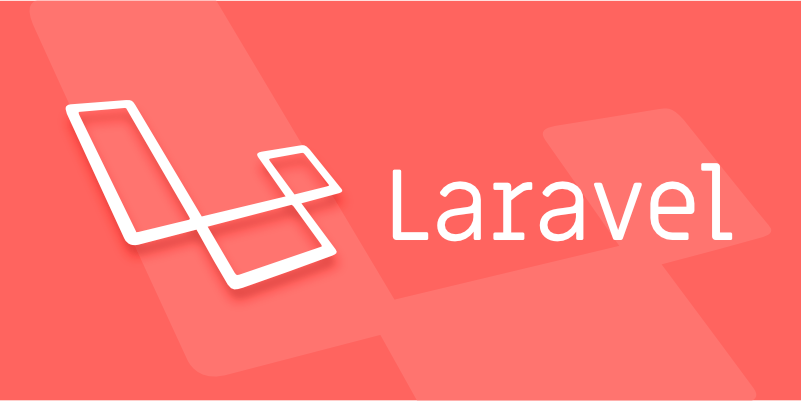Generating URLs for Named Routes in Laravel.
Jul 16, 2025 am 02:50 AMThe most common way to generate a named route in Laravel is to use the route() helper function, which automatically matches paths based on the route name and handles parameter bindings. 1. Pass the route name and parameters in the controller or view, such as route('user.profile', ['id' => 1]); 2. When multiple parameters, you only need to pass the array, and the order does not affect the matching, such as route('user.post.show', ['id' => 1, 'postId' => 10]); 3. You can directly embed the link in the Blade template, such as View the information; 4. When optional parameters are not provided, it will not be displayed, such as route('user.post', ['id' => 1]) output /user/1/post; 5. When adding query parameters, just write to the array directly, such as route('user.profile', ['id' => 1, 'tab' => 'settings']) output /user/1?tab=settings.

The most common method to generate a named route in Laravel is to use route() helper function. It can automatically generate corresponding URLs based on the route name, saving the hassle of manually splicing paths, and can also automatically handle parameter binding.

Use route() function to generate URL
Laravel provides a very convenient route() function specifically for generating links to named routes. You only need to pass in the route name and parameters, and Laravel will automatically match the corresponding path.
// Suppose your route is defined as follows:
// Route::get('/user/{id}', function () { ... })->name('user.profile');
// Use this in a controller, view, or Blade template:
echo route('user.profile', ['id' => 1]);
// Output: /user/1If you have multiple parameters, you can also pass in the array:

route('user.post.show', ['id' => 1, 'postId' => 10]);
Note: The order of parameters does not affect, Laravel will automatically match according to the route definition.
Use in Blade templates
In the Blade template, you can directly use route() to generate links to the <a> tag:

<a href="{{ route('user.profile', ['id' => $user->id]) }}">View Profile</a>This method is very practical when generating dynamic links, for example, each user in the user list page corresponds to a detail page.
Process optional parameters
If you have optional parameters in your route, just omit this parameter when passing the parameter:
//Route definition:
// Route::get('/user/{id}/post/{postId?}', ... )->name('user.post');
route('user.post', ['id' => 1]); // Output: /user/1/postOptional parameters will not appear in the URL if not provided.
URL with query parameters
If you need to add additional query strings, you can add:
route('user.profile', ['id' => 1, 'tab' => 'settings']); // Output: /user/1?tab=settings
These parameters do not affect route matching, but are only attached as query strings after the URL.
Basically that's it. Using route() function well allows you to flexibly and safely build links in Laravel to avoid maintenance problems caused by hard-coded paths.
The above is the detailed content of Generating URLs for Named Routes in Laravel.. For more information, please follow other related articles on the PHP Chinese website!

Hot AI Tools

Undress AI Tool
Undress images for free

Undresser.AI Undress
AI-powered app for creating realistic nude photos

AI Clothes Remover
Online AI tool for removing clothes from photos.

Clothoff.io
AI clothes remover

Video Face Swap
Swap faces in any video effortlessly with our completely free AI face swap tool!

Hot Article

Hot Tools

Notepad++7.3.1
Easy-to-use and free code editor

SublimeText3 Chinese version
Chinese version, very easy to use

Zend Studio 13.0.1
Powerful PHP integrated development environment

Dreamweaver CS6
Visual web development tools

SublimeText3 Mac version
God-level code editing software (SublimeText3)

Hot Topics
 1794
1794
 16
16
 1739
1739
 56
56
 1590
1590
 29
29
 1467
1467
 72
72
 267
267
 587
587
 How to use PHP to develop a Q&A community platform Detailed explanation of PHP interactive community monetization model
Jul 23, 2025 pm 07:21 PM
How to use PHP to develop a Q&A community platform Detailed explanation of PHP interactive community monetization model
Jul 23, 2025 pm 07:21 PM
1. The first choice for the Laravel MySQL Vue/React combination in the PHP development question and answer community is the first choice for Laravel MySQL Vue/React combination, due to its maturity in the ecosystem and high development efficiency; 2. High performance requires dependence on cache (Redis), database optimization, CDN and asynchronous queues; 3. Security must be done with input filtering, CSRF protection, HTTPS, password encryption and permission control; 4. Money optional advertising, member subscription, rewards, commissions, knowledge payment and other models, the core is to match community tone and user needs.
 How to define and use Route Groups in Laravel.
Jul 21, 2025 am 02:15 AM
How to define and use Route Groups in Laravel.
Jul 21, 2025 am 02:15 AM
RouteGroups in Laravel are used to uniformly configure and manage routing of multiple shared settings to reduce duplicate code and improve readability. RouteGroups can centrally handle middleware, namespace, routing prefix, subdomain name binding and other configurations, such as: 1. Use prefix to set routing prefix, which is often used in API or background paths; 2. Unified middleware application through middleware; 3. Use namespace to simplify controller calls; 4. Use domain to implement subdomain name routing; 5. Support nested routing groups to achieve finer granular control; 6. Provide unified prefix for route naming with the as parameter to improve maintenance efficiency.
 Deploying a Laravel Application.
Jul 21, 2025 am 03:48 AM
Deploying a Laravel Application.
Jul 21, 2025 am 03:48 AM
When deploying Laravel applications, you need to pay attention to environment configuration, code upload, database settings and task configuration. 1. Prepare the server environment, install PHP (8.0), Composer, Nginx/Apache and MySQL/MariaDB, and configure necessary extensions and services; 2. Upload the project and install dependencies, use FTP or Git to upload code, run composerinstall and generate optimization commands; 3. Configure database information, create database and set permissions, perform migration and seeder, adjust storage/and bootstrap/cache/ permissions; 4. If you use queue or timing tasks, start worker or add Cron entries to
 Using many-to-many relationships with pivot tables in Laravel.
Jul 20, 2025 am 01:37 AM
Using many-to-many relationships with pivot tables in Laravel.
Jul 20, 2025 am 01:37 AM
Howdoyouhandlemany-to-manyrelationshipsinLaravelusingpivottables?1.CreateapivottablefollowingLaravel’snamingconvention(alphabeticalorderofthetworelatedtables,e.g.,role_user).2.Defineforeignkeys(e.g.,user_idandrole_id)andsetupforeignkeyconstraintsinth
 When to use a Service Layer in Laravel.
Jul 21, 2025 am 02:16 AM
When to use a Service Layer in Laravel.
Jul 21, 2025 am 02:16 AM
When the controller responsibilities in the Laravel project are confused, duplicate logic occurs, good testing and integration of external systems are required, ServiceLayer should be introduced. 1. When the controller is too bloated, the business logic should be withdrawn from the Service class and only the request response processing should be retained; 2. When multiple controllers need to call the same logic, they should be encapsulated as reusable services; 3. In order to improve testability and decoupling capabilities, the Service should be used through dependency injection; 4. When third-party services or asynchronous tasks are involved, the Service should handle interaction and exception mechanisms uniformly.
 Using Chainable Jobs in Laravel.
Jul 21, 2025 am 01:45 AM
Using Chainable Jobs in Laravel.
Jul 21, 2025 am 01:45 AM
ChainableJob is a queue mechanism in Laravel for sequential execution of tasks. Its core purpose is to link multiple tasks together to execute them in sequence, ensuring that the next task is executed only after the previous task is completed. The method of using is to organize tasks through the Bus::chain() method. Note when using: 1. Each job should be run independently and does not depend on memory status; 2. Process failure logic, set retry or listen for failure events; 3. The results can be passed through parameters between jobs. In addition, by default, all jobs are pushed to the same queue. If different queues are required, they can be configured manually, but may affect priority recognition. Job link failures can be processed through failed() method or global listening, and should be combined with logging to avoid silent failures. Job link
 How to use named routes in Laravel?
Jul 21, 2025 am 03:45 AM
How to use named routes in Laravel?
Jul 21, 2025 am 03:45 AM
The core role of named routing in Laravel is to improve maintainability. It allows developers to generate URLs or redirects through names rather than hardcoded paths, and when the path changes, you only need to modify the name binding at the route definition. Use the name() method to name the route. It is recommended to use dot-delimited naming methods such as user.profile to enhance structural clarity. In a Blade template or controller, you can reference a named route through the route() function and pass in an array of parameters to generate a link or redirect it. Notes include avoiding name conflicts, matching parameters by name, and viewing all named routes through phpartisanroute:list.
 Using Named Routes in Laravel.
Jul 21, 2025 am 01:44 AM
Using Named Routes in Laravel.
Jul 21, 2025 am 01:44 AM
The name of routes in Laravel is mainly to improve code readability and reduce maintenance problems caused by hard-coded paths. By specifying a unique name for the route, you can use route() or redirect()->route() and other methods to refer to the route. Even if the URL path changes, the link will still work normally; 1. The naming method is to call the ->name('name_here') method when defining the route; 2. Common naming methods include controller action methods (such as 'user.index') and naming them by functional modules (such as 'dashboard'); 3. You can combine routing packets and prefixes to avoid duplication; 4. The main application scenarios include Blade template generation




